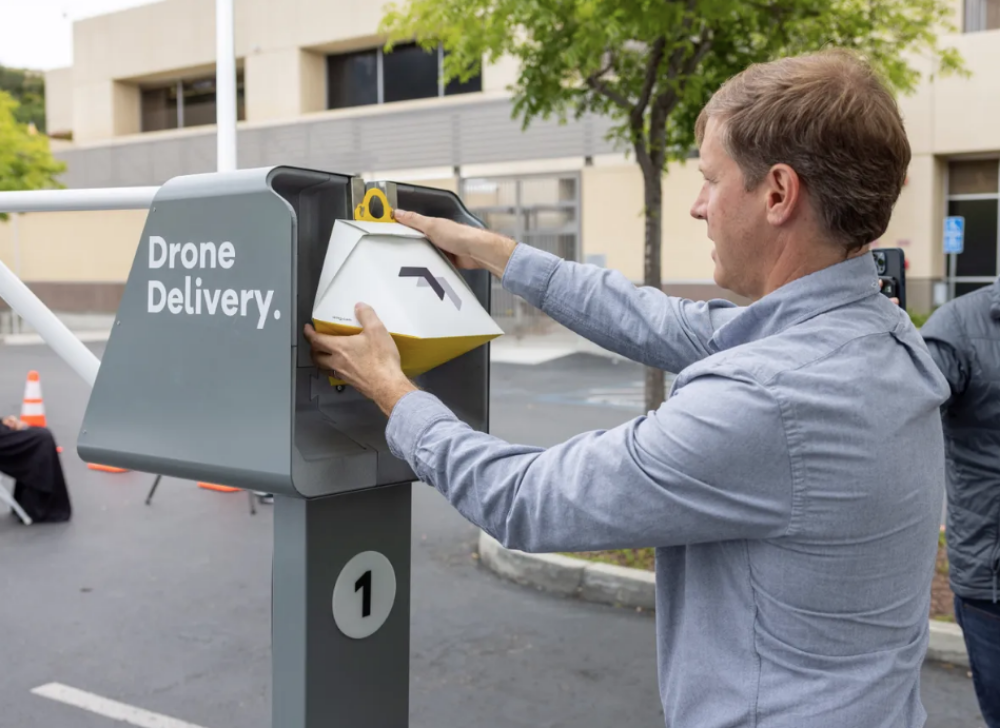Wing, the drone delivery subsidiary from Google parent company Alphabet, has shown publicly for the first time the “autoloader” station it expects will make it significantly easier for retailers to send products through the air to customers.
The autoloader, announced in March and set to be deployed later this year, is a Y-shaped stand that easily fits in a parking space. A company employee hangs a delivery box on a pair of hooks on the autoloader then returns to work. There’s no need to wait for the drone to arrive, because it can snag the package on its own by lowering a yellow hook to the autoloader station.
Wing demonstrated its autoloader technology in a company parking lot at offices in Palo Alto, California, flying packages to a nearby courtyard. It took no special measures to avoid people, trees and cars other than blocking off three parking spots with traffic cones, a sign that Chief Executive Adam Woodworth said shows how mature operations have become.
“We are at the point in this journey where I think that this is a thing that’s going to happen,”
Woodworth said. Wing has made more than 340,000 drone deliveries so far with operations in Australia, Finland, Virginia and Texas.

Wing marketing chief Jonathan Bass shows how a store employee hooks a package onto the autoloader to await drone pickup
In spite of the name, the AutoLoader is a fully passive system. It’s stands roughly four feet tall, not including the two PVC pipes that jut out the front like a pair of horns. Operation is simple. Once the order is placed, an employee packs it into a cardboard box with a plastic ring on top that looks a fair bit like a Happy Meal. Loading it onto the rig is simple: you place the two pegs on the AutoLoader through a pair of holes in the box.
When the drone comes by, it hovers over the AutoLoader for a bit, to scope out the situation and make sure everything looks right. If it encounters an issue that it can’t correct for (say the employee forgot to load up the package), it will return to the hub. One downside of the fully passive system is that it can’t alert the drone or operates to potential issues.
If everything looks good, the drone lowers a tether, while the two poles ensure that it doesn’t drift too far from the target. Once the tether is properly positioned underneath the box, it begins to retract, snapping the payload up like a fishing wire, pulling it up for the journey. Once the drone reaches the pickup spot determined by the customers, it lowers the box gently to the ground. This area needs to be roughly six by six feet, with no foliage obscuring the area.
“It’ll save a lot of time for the user. Instead of going to the store and picking something up, you’re staying at home and waiting for the drone to deliver it to your doorstep,” said Wing marketing chief Jonathan Bass. “For a worker, they can essentially place the package on the auto letter, go back inside and continue working. We think it will save a lot of time.”
“We do expect to introduce aircraft that can deliver larger payloads and some smaller [aircraft] that might be longer range,” Bass said.
Today, Wing’s drones have a range of 6 miles, though bing part of a Wing delivery network, with a mesh of destinations, will extend that since Wing can offer wireless charging pads in more locations.
Photos: Stephen Shankland/CNET
Sources: TechCrunch; CNET;


